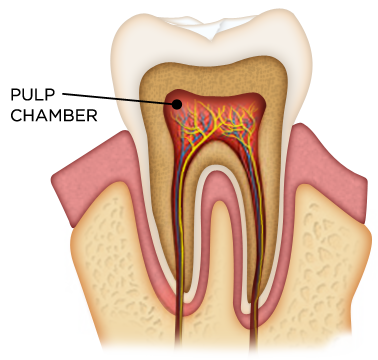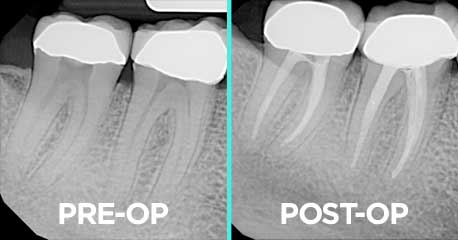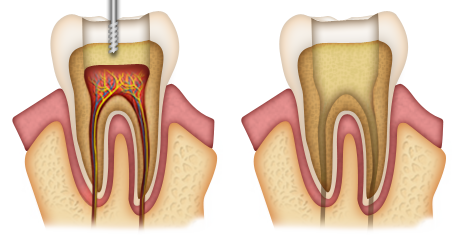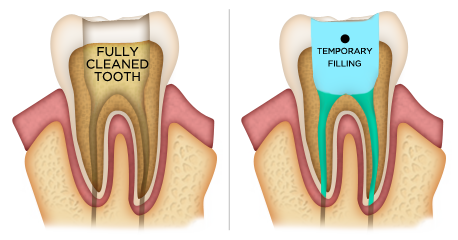
A root canal is a treatment that simply cleans out the inside of a tooth. After cleaning it out your doctor will seal your tooth. They do this to prevent you from having any future infection or pain, not to inflict pain on you.
Contrary to popular belief, teeth are not composed of solid bone. In fact, each of your teeth have a hollow chamber at the center that contains what your doctor will call pulp. This area is called the Pulp Chamber. The Pulp Chamber travels from the center of your tooth all the way down to the tip of the tooth’s root.
People have four basic types of teeth, and each type of tooth has a different number of roots (x): Molars (4), Premolars (2), Cuspids (2), and Incisors (1). Because each type of tooth has a different number of roots, they can also have a different number of root canals. So, a molar could* have up to 4 root canals performed, cuspids can have up to 2 and so on.
The need for a root canal most-commonly occurs when the pulp (nerve) becomes infected, exposed or if it dies. If your tooth has an infection your Doctor may prescribe you medication to combat the infection before your procedure.

1. Preparation
Your doctor will first take an X-ray of your tooth to reference throughout the procedure. This X-ray is painless so no need to worry. After the X-ray is completed the doctor will numb the area with a local anesthetic. After the area is numb, the doctor will clean and disinfect the area before placing a guard around the tooth. This guard will keep the tooth dry throughout the procedure; It will also protect the rest of your mouth from solutions and debris during the procedure.

2. Clean-out
While you’re numb the doctor will bore a small channel into the tooth and into the pulp chamber. This is painless. you may feel a cold sensation, but that will be all. This channel will enable the doctor to extract the pulp from the tooth.
The pulp (nerve) and any other infected tissue will be removed with a series of micro-files. He may choose to do another X-ray to confirm that the necessary material has been removed. Dr. Criser will take care to remove any dead tissue and sanitize the canal to prevent future infection. This may take some time, but it’s worth the wait in the long run.

3. Seal it up
Once Dr. Criser is confident that the tooth is completely clean he will proceed to dry the inside of the tooth and place a rubber-like sealant material (shown in green) into the tooth.
From here it’s easy sailing. Dr. Criser will give you a temporary filling (shown in blue). At later date, you will see your dentist for a permanent restoration.
Sealing the tooth concludes the procedure. All that’s left is to do is to see Rachel at the front desk to receive your post-procedure instructions.
NEED MORE INFO?
If you have more questions you can always email us here at the office. You can also follow the link to our source for a more technical explanation of the procedure.




